In English:
This quite big wooden church was built in 1905. The bell tower is already from 1804. Also outside there is beautiful wooden poor man statue (wooden beggar) from 1820.When looking these numbers, we can understand that the church is newer than bell tower, yes it is, because this church is the third one on this place.
Inside there is an huge Votive-ship. It is big really and I guess that it took plenty of time to make it. For me this church was a treasure, when finding at same time ship and poor man statue.
Famous, maybe the two best, church builder’s names with this church are: Heikki Kuorikoski and Jacob Rijf.
En español:
Esta iglesia grande de madera fue construida en 1905. El campanario es ya del año 1804. También fuera hay una hermosa estatua de pobre hombre (mendigo de madrea) del año 1820. Mientras al mirar estos números, podemos comprendernos que la iglesia es más nueva que el campanario, sí lo es verdaderamente, porque esta iglesia es la tercera en este sitio.
En el interior hay un Buque de Votivo inmenso. Es grande realmente y adivino que tomé mucho tiempo de fabricarlo. Para mí esta iglesia fue un tesoro, al encontrar en mismo tiempo un Buque de Votivo y una estatua pobre hombre.
Los dos nombres famosos de constructor de eglise con esta iglesia son: Heikki Kuorikoski y Jacob Rijf.
En francais:
Cette tout à fait grande église en bois a été incorporée 1905. Le clocher est déjà de l’an 1804. Aussi dans extérieur d’il y a une belle statue d’homme pauvre (mendiant en bois) de l’an 1820. Maintenant en regardant ces chiffres, nous pouvons comprendre que l’église est c’est plus nouveau que de clocher, oui c’es ainsi, parce que cette église est la troisième dans cet endroit.
Dans l’intérieur il y a un Bâteau votif énorme. C’est grand vraiment et je devine que on a pris tellement de temps de faire la. Pour moi cette église était un trésor, en trouvant au même Bâteau votif et à une statue d’homme pauvre.
Les deux noms célèbres du constructeur d’église avec cette église sont : Heikki Kuorikoski et Jacob Rijf.



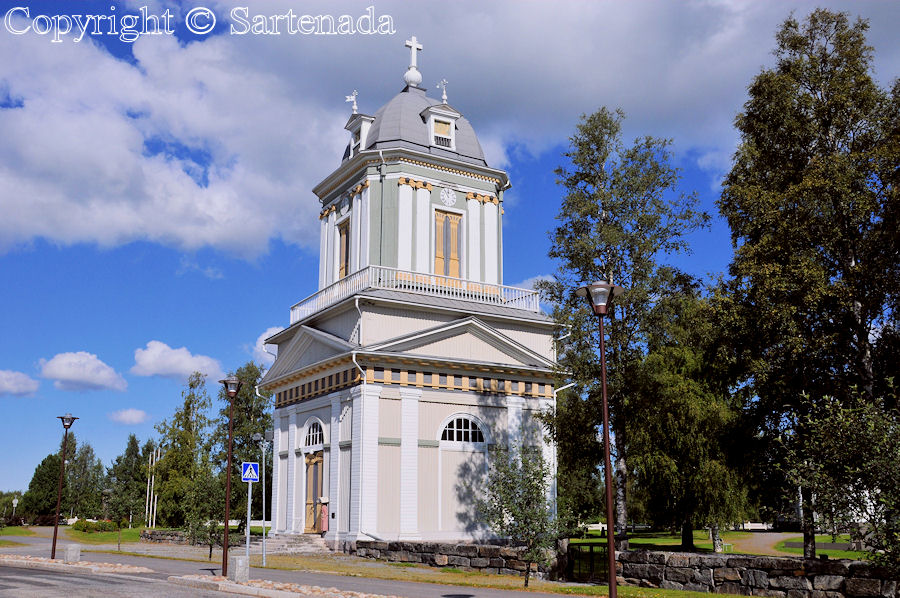

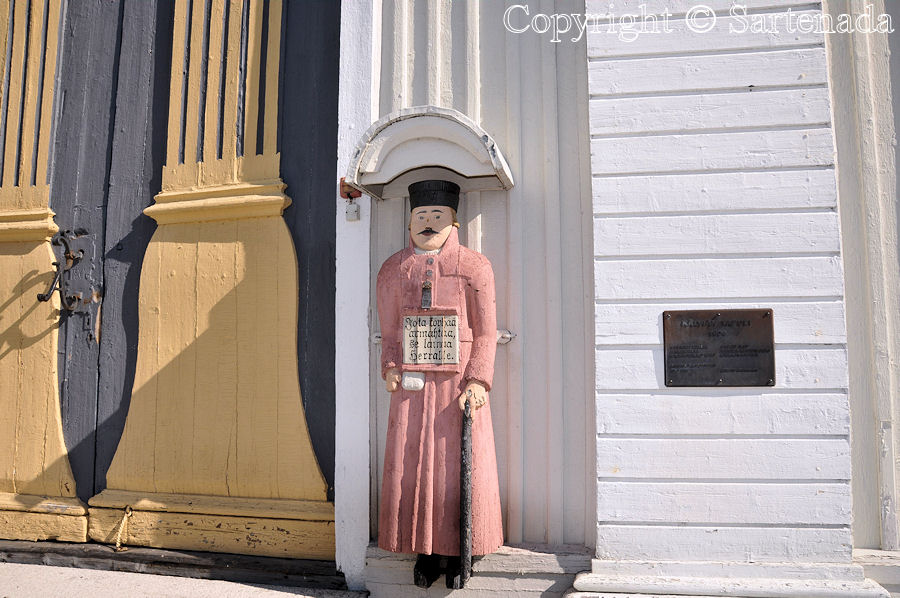
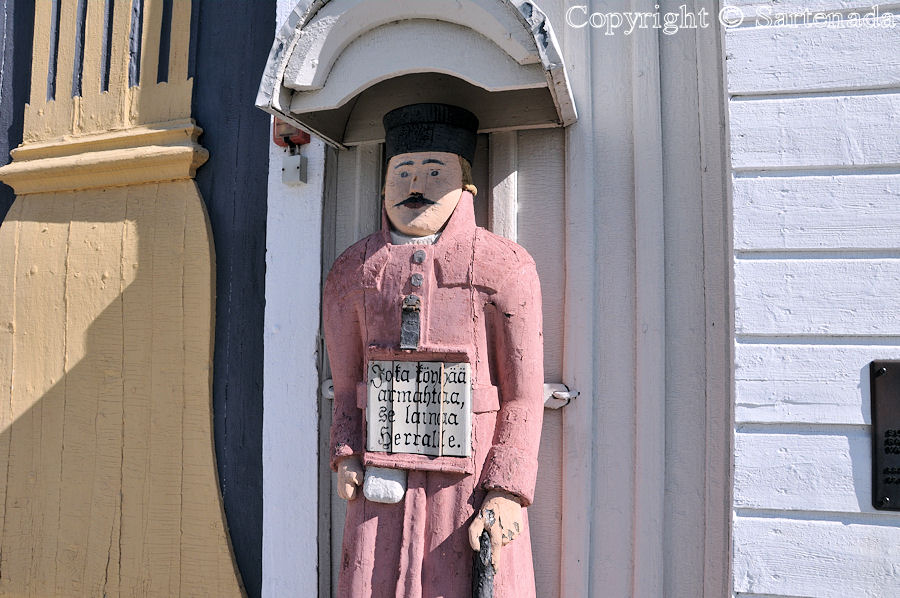

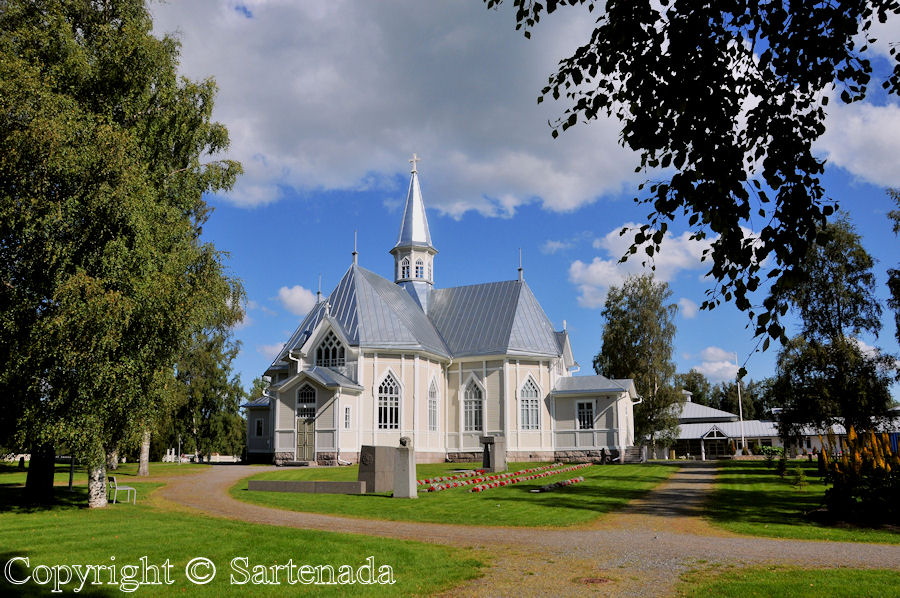


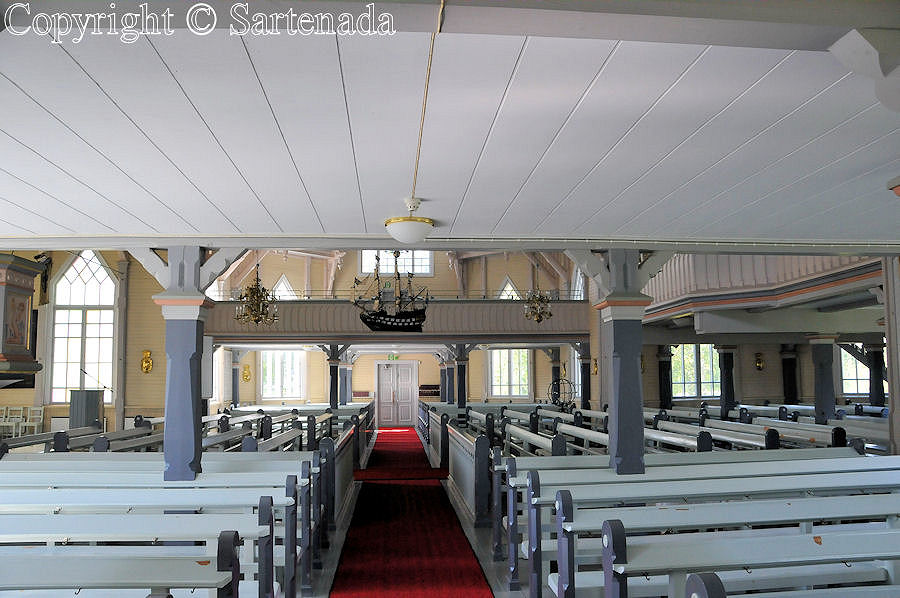
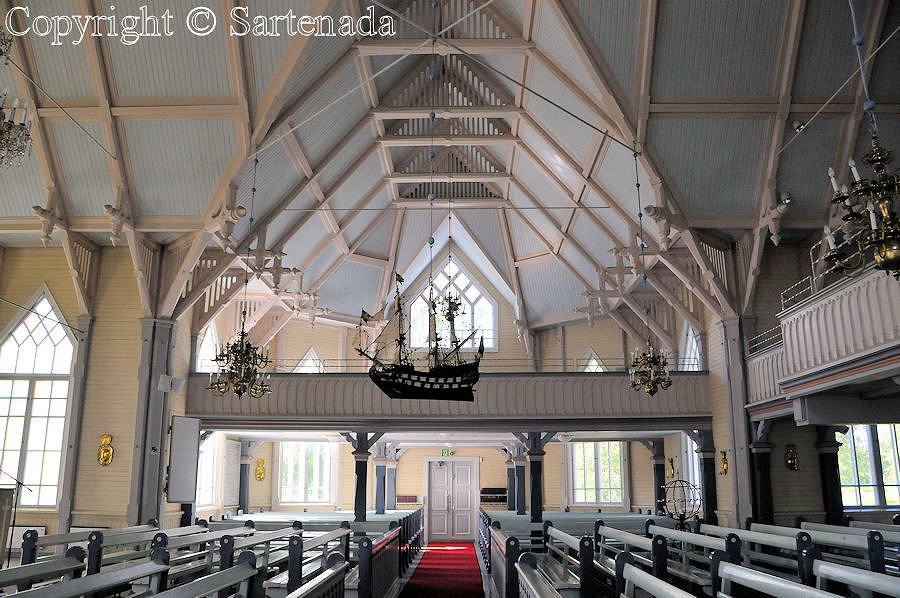
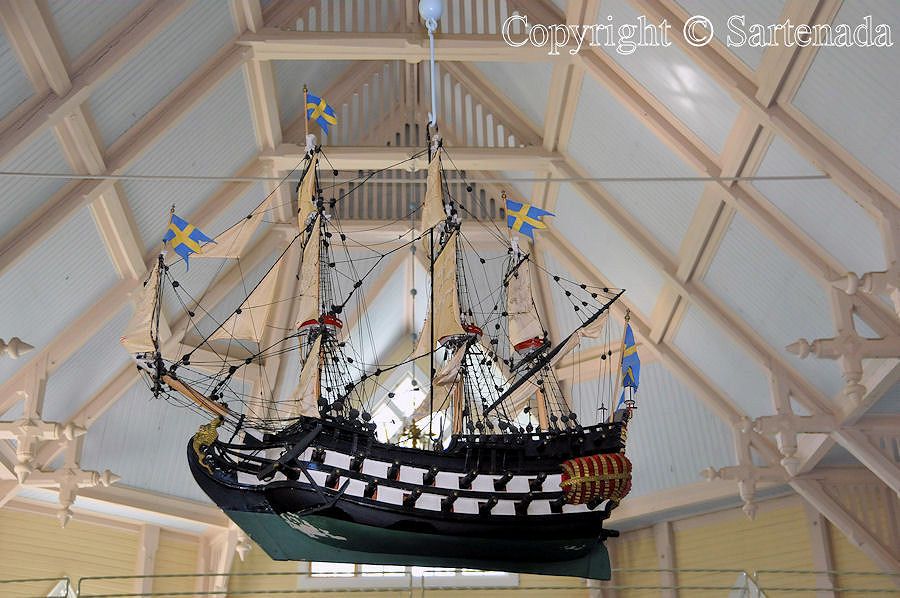

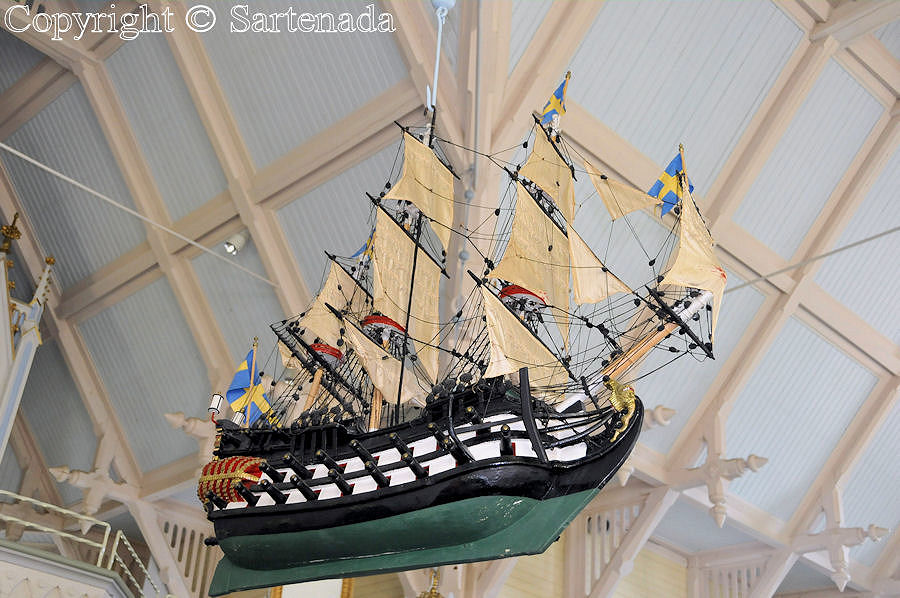
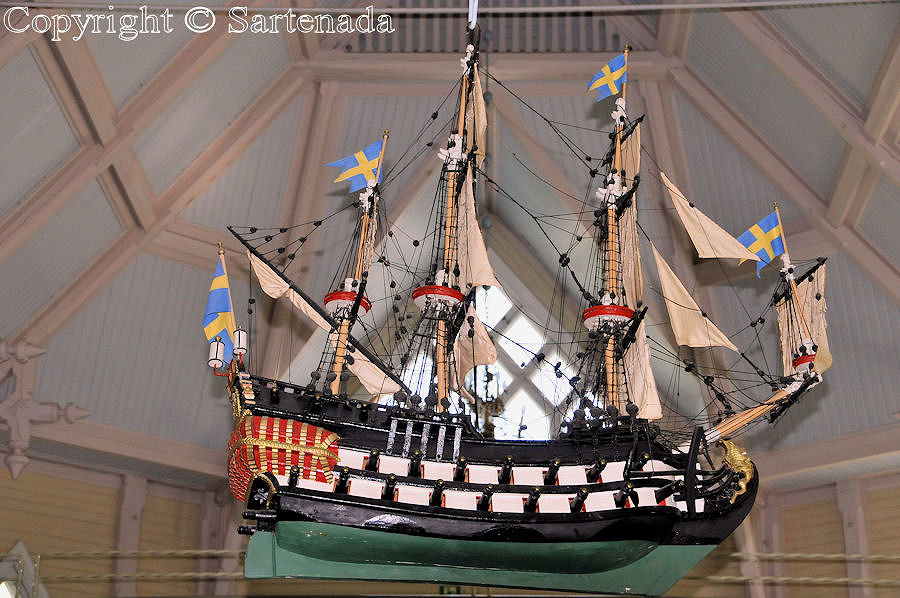


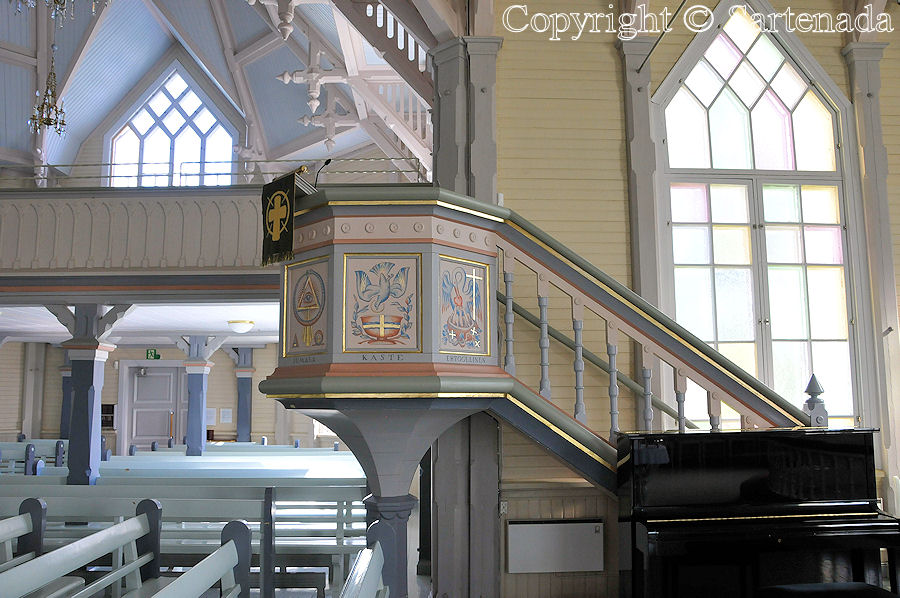
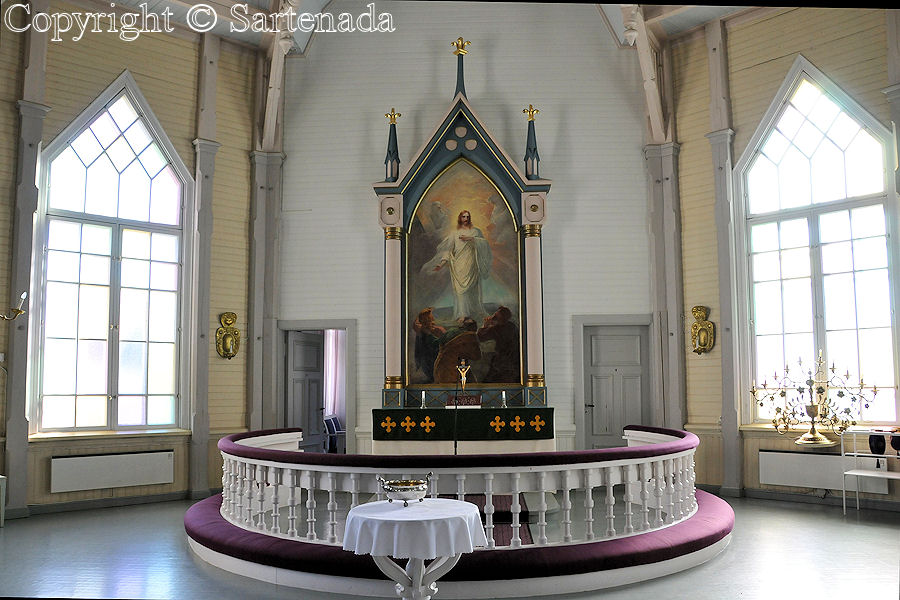



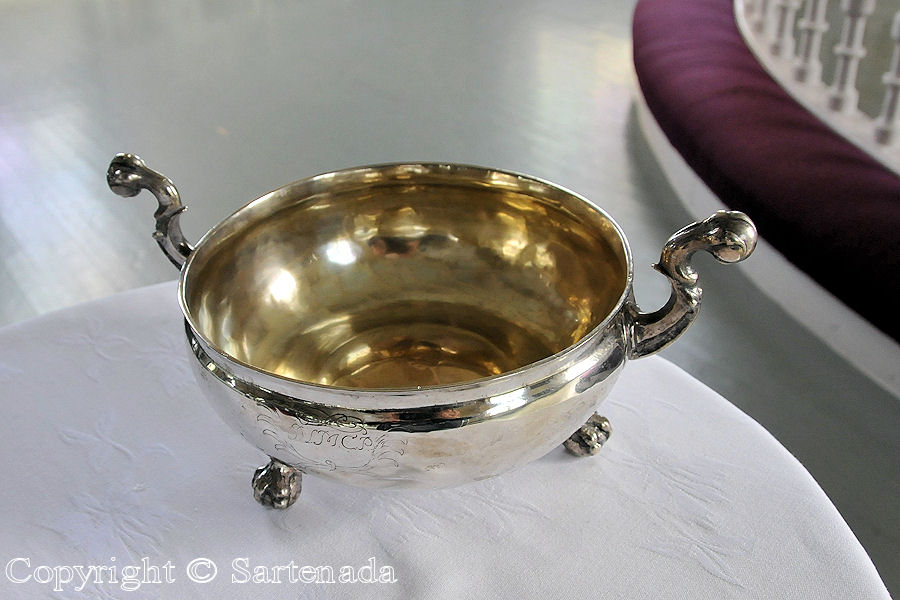


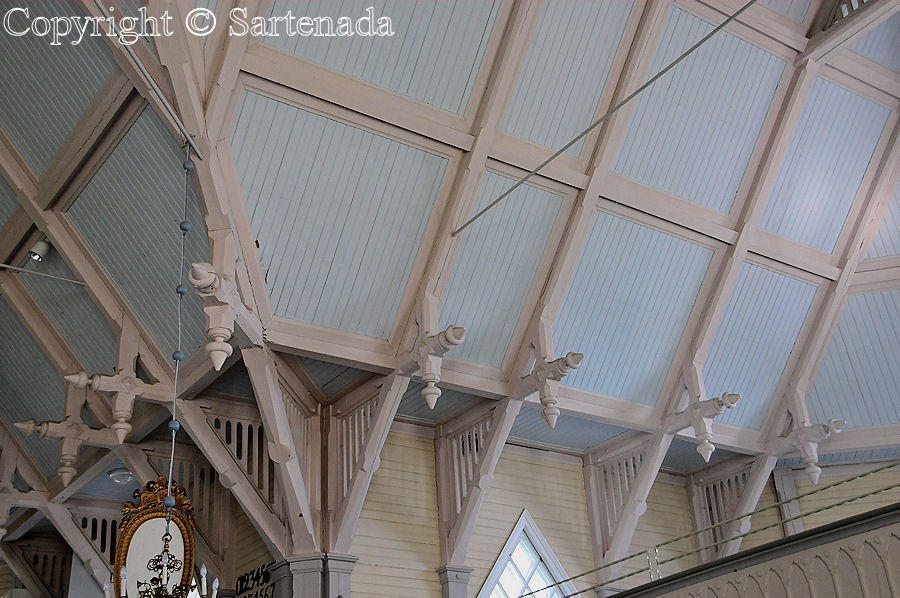
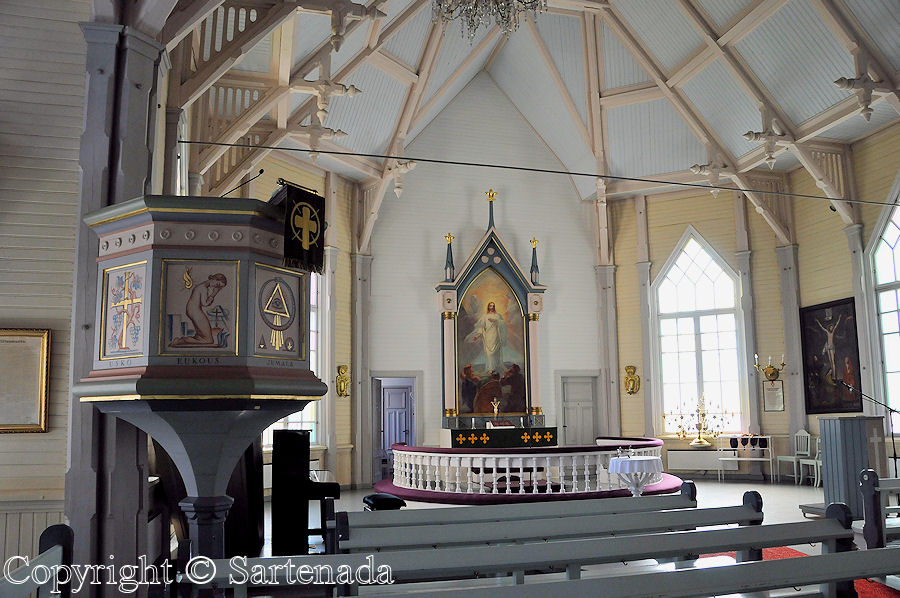

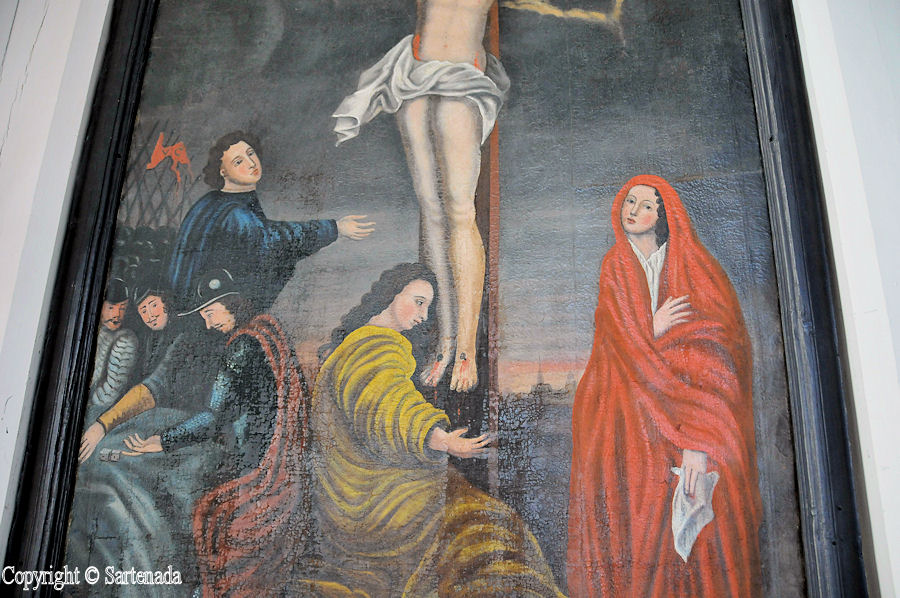
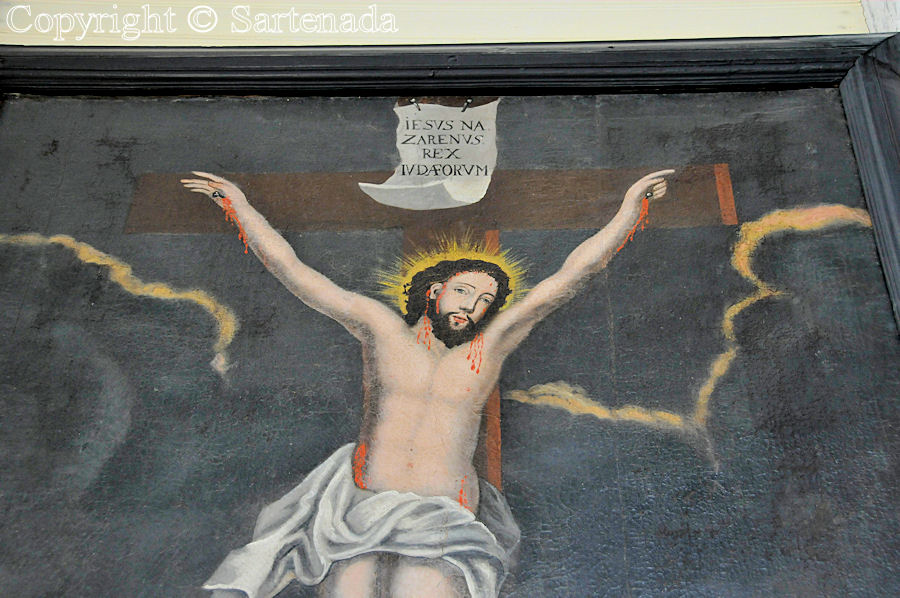



What an interesting Blog. I have just looked at Google maps and even walked along the Ullavantie right past your Church and saw the poor man statue. I love to know exactly where places are. I didn’t know about Voltive ships in churches. Why is it flying the Swedish flag? Wonderful photos, once more!
Comment by jackiequeen — May 24, 2010 @ 14:31 |
Hi Jackie.
Wow. You used Google maps to find this place. We have plenty of Votive ships in our churches, but how many, I do not know. If I remember correct in Montreal there is also. There are 106 poor man statues and one poor woman statue and that Lady I love (You’ll see her later, surely). Well, why Swedish flag. I figure that it is due that, because the area where the church is situated, has relationships to Sweden. We have a small minority who talks Swedish. Mainly the reside along the coast line.
Thank for Your interest and leaving nice comment.
P.S. I playd also with Google maps in this case. I gave the address: Ullavantie 28 , 68300 KÄLVIÄ. Copy it from here. Then I took Street View. By clicking once to the left, then there it was really the poor man statue on the wall of the bell tower. Great.
Comment by sartenada — May 24, 2010 @ 14:45 |
What an intriguing and architecturally beautiful designed and built church. A Votive ship hanging inside the church and someone crafted and painted the ship with expert care. I haven’t seen anything as to a ship hanging in a church before. The symbols were interesting, especially the one called ‘Jumala’ in which looks like the eye of God in the triangle encircled by the snake swallowing its tail (Ouroboros). Looking up Jumala (http://en.wikipedia.org/wiki/Jumala), it states: “The word is thought to have been the name of a sky god of the ancient Finnic-speaking peoples.” This church has a rich and mixed history, it seems, based on the merging of mythology, folklore and Christianity which includes the wooden poor man. I haven’t ever seen a church like this… and I do love the windows with all that light pouring in.
Comment by Anna Surface — May 25, 2010 @ 01:41 |
Hello Anna.
When reading Your nice comment, I saw that You were really interested in this church. When hearing the word Church, everyone of has an image of it, but they differs from each other from country to country and even inside them. Generally speaking in Europe churches have rich decoration and this shows that parishes are wealthy. This is of course okay. This church is situated on the are were people have well-being. In my country there are many poor parishes also and then churches are modest, but they serve it why they have been built. The difference makes churches interesting to visit – at least to me.
Comment by sartenada — May 25, 2010 @ 06:40 |
What a unique church! I’m trying to figure out if it is a catholic church. It has some of the elements of a catholic church, but in a lot of ways is very different from any catholic church I’ve been in. I’ve never seen a ship in a church or a poor man statue.
(Sandhill cranes spend the spring, summer and fall where I live. They are pretty impressive birds.)
Comment by kateri — May 25, 2010 @ 02:46 |
Hi Kateri.
As I replied to Anna, to visit different churches in different countries is always an experience. It may have some elements from catholic churches, maybe. I started to interest in ships inside churches when I saw that kind in a church and tried to calculate how many working hours takes. Same was to those poor man statues. I have not seen them elsewhere.
Comment by sartenada — May 25, 2010 @ 06:53 |
What a beautiful structure, inside and out! I would love to listen to that organ: I would guess with all of the wood used the acoustics there are wonderful. Very interesting post! Thank you!
Comment by montucky — May 25, 2010 @ 04:46 |
Hi Montucky.
I have heard some organs in wooden churches and the sound is mighty and soft. Personally I like these wooden churches, because I think they are not so easy to plan and to build.
Comment by sartenada — May 25, 2010 @ 06:58 |
Good evening, Matti,
The church looks very nice and well maintained. The architecture is very interesting as well as the interior. Especially the color scheme from the outside and the inside is very harmonious. Also interesting are the small ships that I saw. I think that this church is not to be overloaded, with the decor. The figure before the church door seems to be a pastor. It is an original idea and I think very effective. The color reproduction of all pictures are very clear, natural, and brilliant. I am grateful that I was allowed to visit the site and look forward to the next pictures. I wish you and Anya all the best on your daily routes. Thanks for your nice comments. E-mail follows next weekend. Sincerely Christel
Comment by Christel — May 25, 2010 @ 22:40 |
Hello Christel.
Thank You for Your interest concerning my post. You said quite well: “this church is not to be overloaded, with the decor”. That is right, because many churches on Mediterranean are just are from my mind. I explain better what are those wooden poor man statues:
History of carved wooden poor-man statues and poor-woman statue.
Unique historical poor-boxes or let us say poor-man statues or wooden beggars. When driving around my country taking photos. One interesting thing that I found, were some peculiar statues beside churches or bell towers. They were men or women and always their hand or foot was missing, but anyway those statues looked fine. When examining them more closely I found hole in them. Then I realized that You can put coins into hole and inside there is box. Why these poor-boxes / poor-man wooden statues were set up, when?
All this begins 1649 when Swedish queen Kristina gave order to make poor logs and put them beside church doors, bell towers or some public places. Soon those poor-logs were modified to poor-man statues by local artists. In that time Finland was under administration of Sweden. In Europe wars raged around and many soldiers wounded in them losing foot or arm. When wounded in this way they had to return to their home.
In the 1700, 1800 and 1900 century people was very poor, but they visited church every Sunday faithfully, so the natural place for those poor-man statues was beside churches or bell towers. Maybe these poor-man statues helped most poor, but no statistics remains of course.
When travelling and photographing them I considered that those who were wealthy could at same time show their richness to other people when putting coins into hole. Nowadays we have similar poor-boxes in the entrance of superstores, but they have only one hand and we call them one-armed bandit. Yet nowadays we need coins to use them! What about money left in them? Is it going to the poor as in the 1800 and 1900 centuries? When looking these poor-man statues I photographed, one find that many of them are looking charming and artistic, but some are gnawed by tooth of time. When You are looking these statues, notice their dresses, hair styles etc. All these give an idea about people living during 1800-1900, because many of these statues are made by people themselves.
These poor man statues are living history in my country.
Comment by sartenada — May 26, 2010 @ 06:49 |
Matti,
I haven’t visited your blog in some time (sorry!) but it was interesting that I did today, because I’ve been writing about ships/water this week – and there is that beautiful ship in the church. My father would be interested to see it as he makes model ships.
May I post one of your pictures of it on my blog? Of course I would credit you and link back to your blog.
Enjoyed all your photos, as always.
Jennifer Morrison
Comment by Jennifer — May 28, 2010 @ 19:22 |
Hi Jennifer.
Thank You. So interesting that Your farther is making model ships. My father made only one, but it is another story that I’ll tell later. In my blogs I have presented already one ship inside a church. That is inside the pink church in Kemi (= part of my trilogy).
Happy weekend.
Comment by sartenada — May 29, 2010 @ 07:36 |
Your pictures are incredibly beautiful, and this church is magnificent. I really like the first three pictures, and no. 9, 10, 11, 14 and 21. Again, your photography is the best!
Comment by luchaniktravel — June 25, 2012 @ 22:49 |
Hello Davinder.
Your favorite photos are great selection. I am very glad that You commented this church. It has three “special” things which I love. 1. Separated bell tower. 2. Poor-man statue. 3. Huge Votive ship. In addition to all these the church is wooden. I love wooden churches. The church of Kälviä is situated on an area called Ostrobothnia. It is huge area divided into three parts. After two weeks I’ll drive to there to seek and to photograph those Poor-man statues. They are unique in the whole world! I have a list of them of course, but they are spread on a wide area, well let’s say on hinterland which means that driving is slow on curvy roads. Thank You very much leaving Your comment here.
Have a wonderful day!
Comment by Sartenada — June 26, 2012 @ 07:04 |